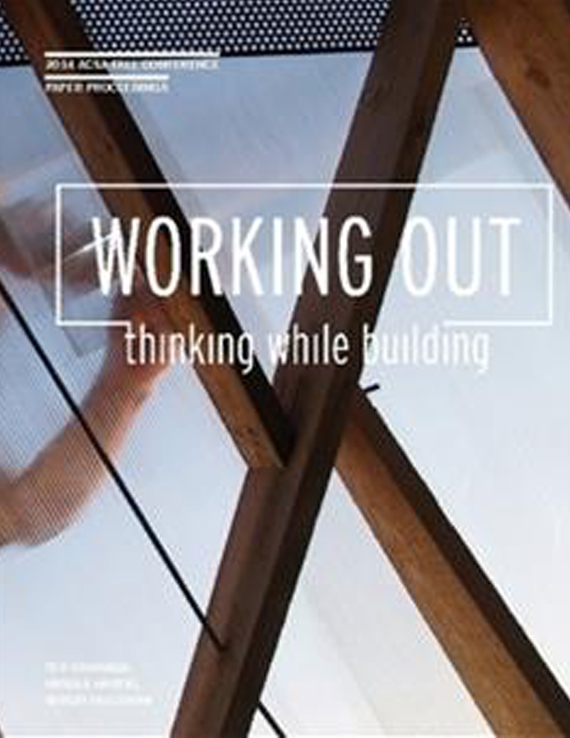Author(s): Jade V. Polizzi
As a faculty member in an interdisciplinary design program I’ve recently taught a handful of design-build classes. One thing I’ve learned during this process is that the “best” students in the program are not necessarily the best students on-site. Bringing students out of the studio environment and onto the site teaches them many things. In a design-build environment students learn: the realities of a design process, construction methods, keeping a project on budget, working for a client and how to estimate and schedule work to be completed within a realistic timeframe. But, most importantly students learn about themselves. My research supports a conclusion that current generations are lacking hands-on skills and mastery previously learned through experiential education and independence. Many of today’s young adults have grown up with a lack of freedom and expression, which manifests itself in anxiety and fear in a work-force setting. If done correctly, design-build helps foster independence, confidence, and creativity in young adults. In design-build courses, students work together to accomplish a common goal. Problems must be solved to move forward rather than glossed over, or avoided, as is commonly the case in a typical studio environment. Giving students responsibility and a sense of ownership causes students to work harder than in a traditional studio environment. What is most interesting is the way that personal interests are expressed in the design-build process. Some people prefer to lead a group on solving design details while others chose manual labor. Some people work better in the solitude of a wood-shop while others gravitate to high-energy group work. As instructors we see all types of students: deliberate, creative, pompous, optimistic, negative. We are faced with the age-old question of who is more productive the tortoise or the hare? When I teach students in the field, every student is required to try their hand on as many facets of the design and construction process as possible. Everyone is required to work together to produce the end product and everyone’s skills are essential. And yet, experience doesn’t equal leadership. If in framing a structure, I have a student who spent the summer framing I will purposefully not chose this student as a crew leader. Instead we will gather information and techniques from this student, but her job will be minimal for this day’s work. In the end, a design-build class that is run successfully will empower students to feel that they can do things that are challenging. Design build encourages underachieving students to take leadership roles, while it teaches traditionally successful students to confront gaps in their education. Design-build is not about a final product-it is about an educational process of self-discovery. This paper will include specifics regarding the design-build projects, the curriculum of the university supporting this process, and successful student examples. I will present on techniques to encourage leadership amongst students who don’t necessary take leadership roles. I will also discuss ways that design build can confront gender inequality in the design profession.
Volume Editors
Sergio Palleroni, Ted Cavanagh & Ursula Hartig
ISBN
978-0-935502-94-7

 Study Architecture
Study Architecture  ProPEL
ProPEL 
